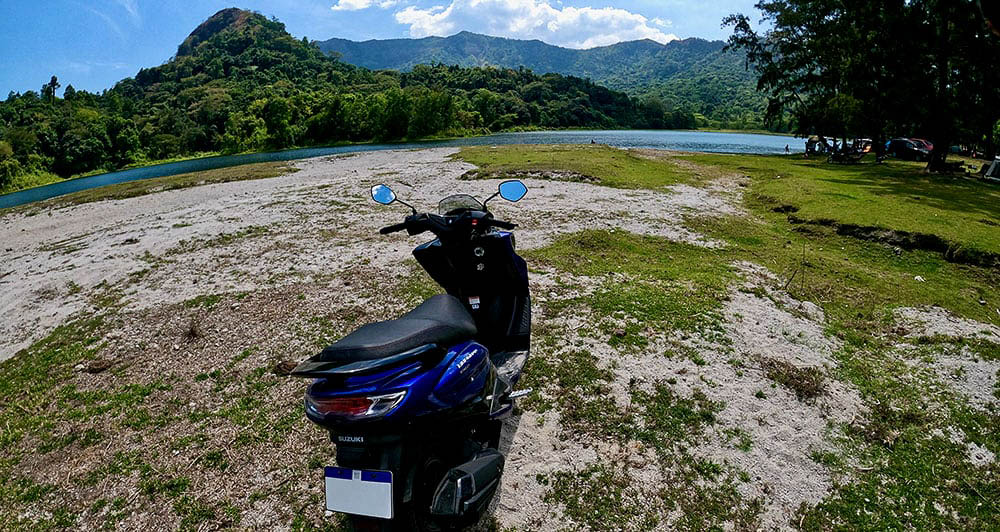
With our long-term Suzuki Burgman slowly accumulating miles with almost daily errands in the city, it was high time we took it somewhere out of town to stretch its legs.
Since I had been going to Zambales once a month for business, I decided to take the little ’Zuk for some light off-roading to Lake Mapanuepe, the so-called “New Zealand” of Zambales. When Mount Pinatubo erupted in 1991, lahar flows blocked the Mapanuepe River and the Maranello River, submerging several barangays.
The resulting lake with its pine trees, steady breeze, and resemblance to a Lord of the Rings landscape has become a tourist attraction and camping site for adventurous travelers who don’t mind roughing it for a night or two.
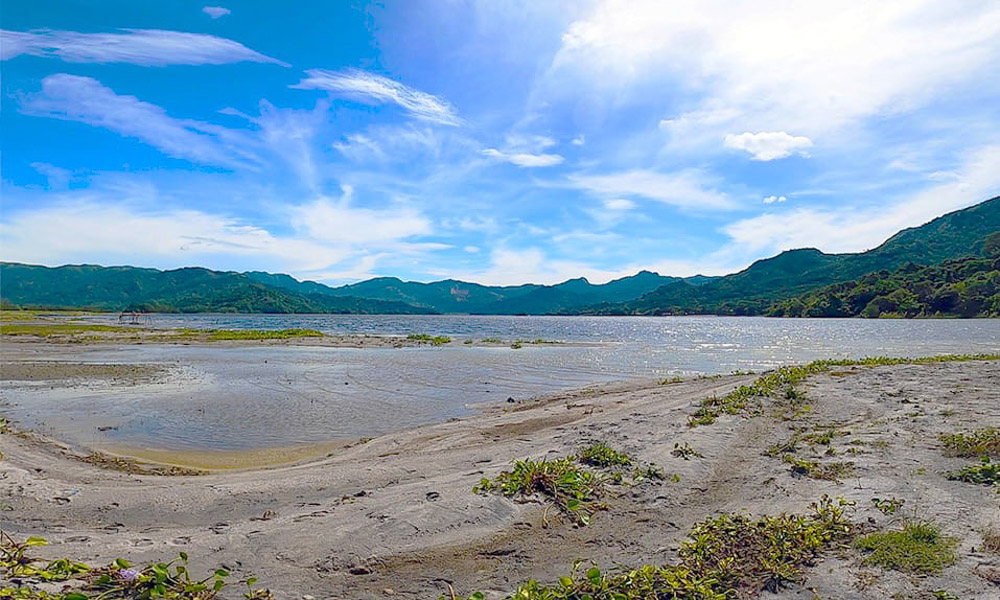
There are two ways to get to the lake: one over mostly paved road, and another that will take you over the dry lahar bed of Santo Tomas River. Both start off from the town of San Marcelino, then take you on the rough road sector of the dike along the river.
Just after the dike ends is a junction. If you go right, that’s around 8km of winding, paved road until you reach Aglao. From there, you can park, eat at a floating restaurant, or hire a banca to take you across the lake to the campsite.
But if you turn left at the junction, you go onto several more kilometers of rough road before eventually crossing the riverbed. If you’re in a four-wheeled vehicle, you’ll have to use a bridge that is private property and ask permission from the guard to go through.
But if you’re on two wheels, you can opt to skip that bridge and instead go a little further up the road and onto a narrow, rusty, steel bridge that’s around 250m long and around 40ft high.
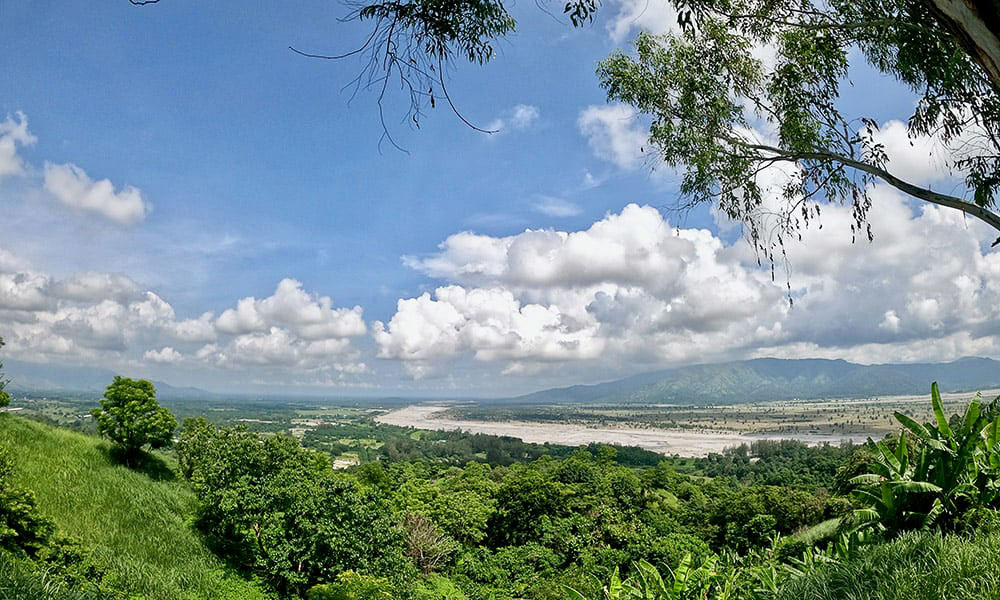
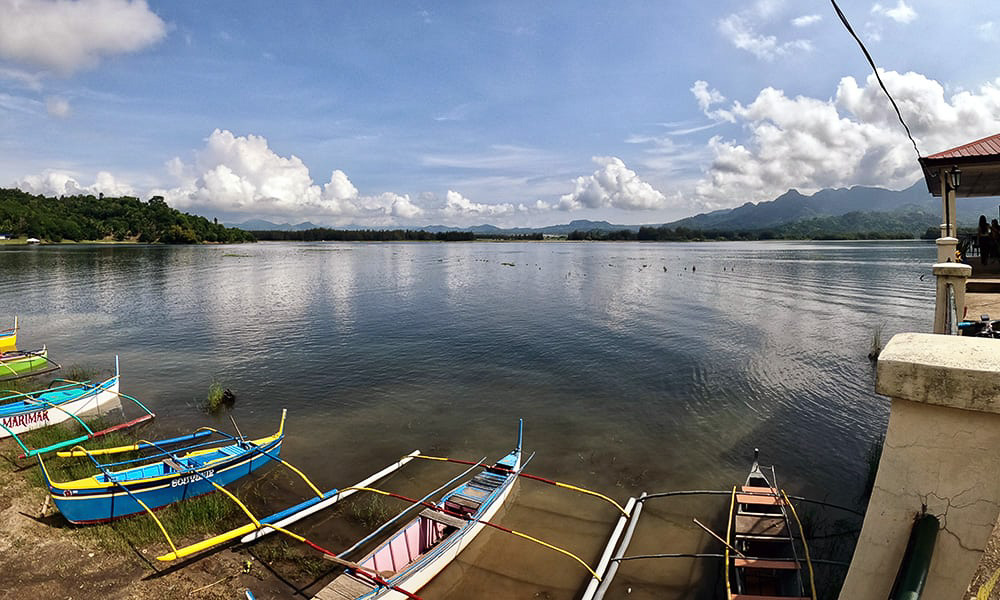
From there, it’s several more kilometers of slow going over lahar and a couple of water crossings before finally reaching the campsite.
With my son Max riding pillion, we set off for the lake and some precious bonding time (parents, never pass on an opportunity to bond with your kids). Getting to San Marcelino was the easy part, with the wide Zambales highway giving motorists plenty of room to pass.
The fun started when we reached the off-road part at the dike. Most vehicles slow down a lot here, but I’d done this route several times on my bike already, and the secret was to go fast enough so that the suspension ‘floated’ over the bumps rather than pogoing over each and every one of them.
The trick, of course, was to not go so fast that we’d lose control if we suddenly hit a deep patch of lahar. Another technique was to use the rear brake more than the front to gradually slow down, lessening the risk of locking up the front tire and washing out.
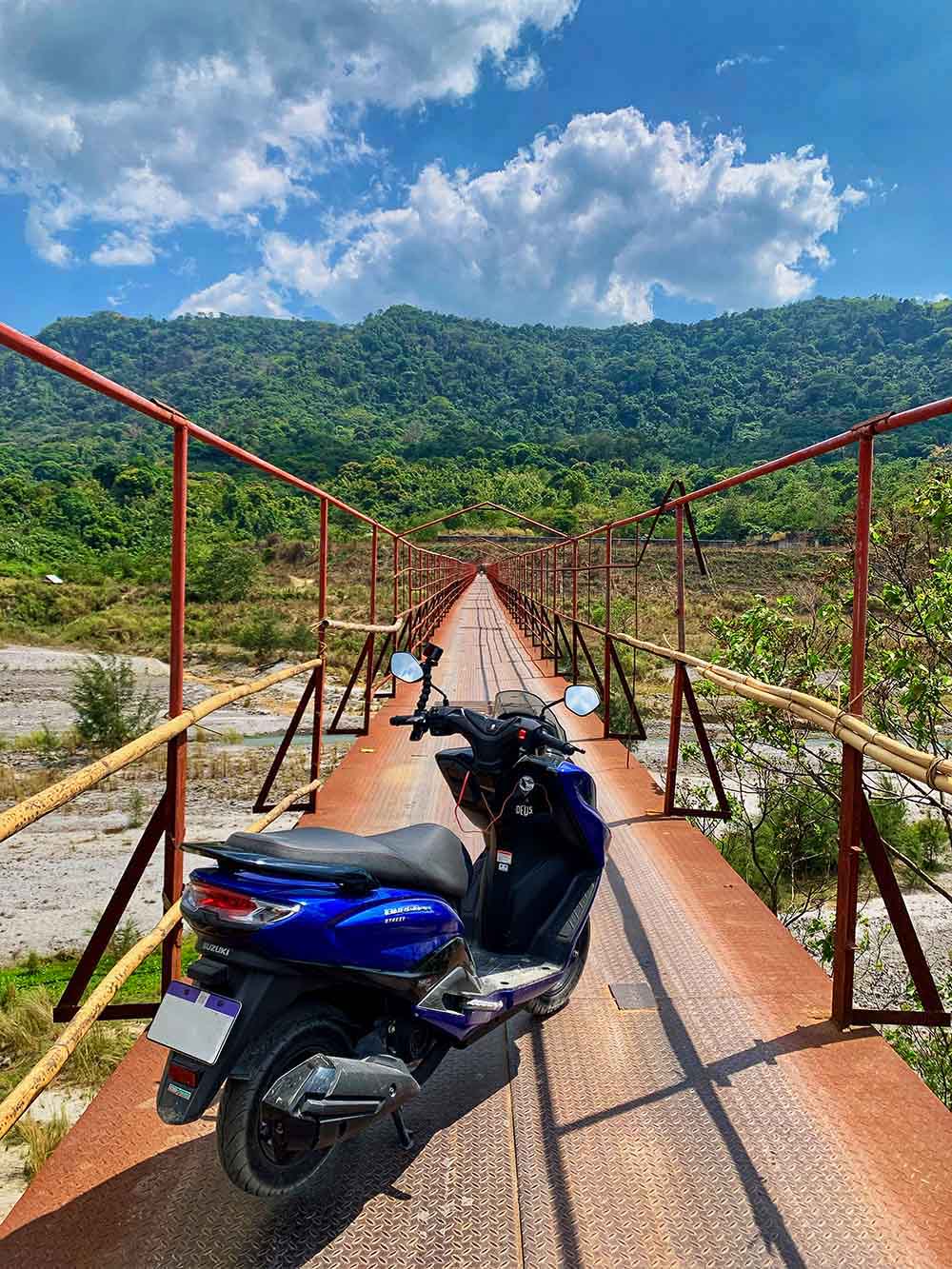
We got to the steel bridge in good time, and I had Max hold the GoPro over my shoulder while we crossed at jogging speed. If the bridge were to suddenly crumble, at least the GoPro would record our last moments together.
Just kidding. The bridge is quite sturdy as long as you cross one at a time. I’d even heard that some crazy guys had crossed with a Jimny before.
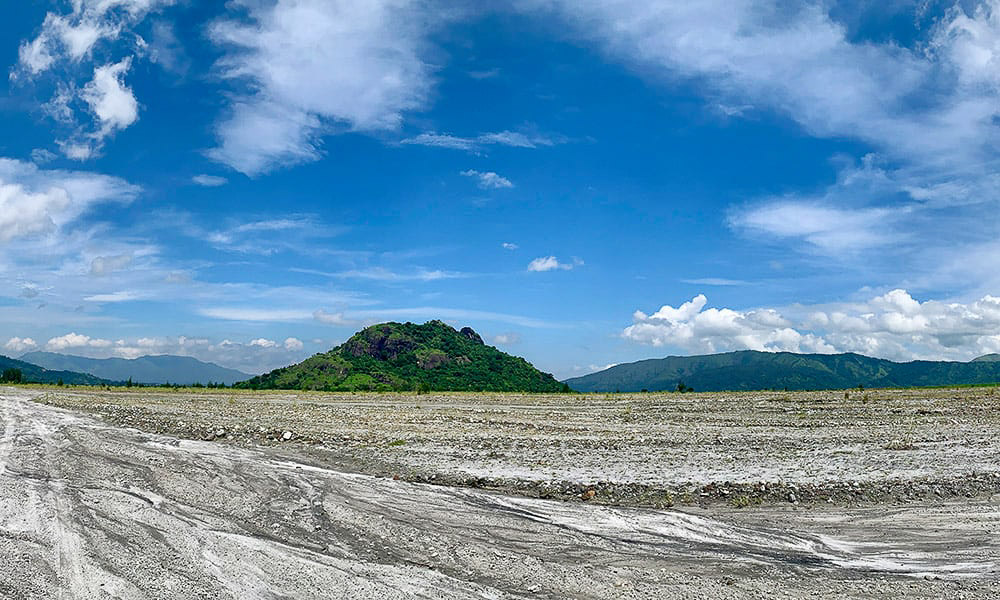
After the bridge is about a kilometer of lahar that’s calf-deep in some spots. With the Burgman’s stock tires, I actually wasn’t sure we’d have enough traction to make it all the way as I’d even had trouble before on my mountain bike.
Even rolling at 12-15km/h, we’d occasionally hit a deep patch and slide for a few feet while the tires scrabbled for traction. But since the Burgman was light and the seat height was manageable, we never lost control or dumped the bike.
All I needed was a second to point the front tire back to where I wanted to go, squeeze the throttle until the tires bit, and we were rolling again. Not exactly white-knuckle riding there, but I did have to concentrate and relax at the same time. I gave instructions to Max to jump clear if we were about to fall, but he never had to.
Somewhere around the point where you’re across a small hill is a critical turn. You have to turn right at that point, or else you’ll wind up going several more kilometers in the direction of Mount Pinatubo (I’d done this mistake twice in the past).
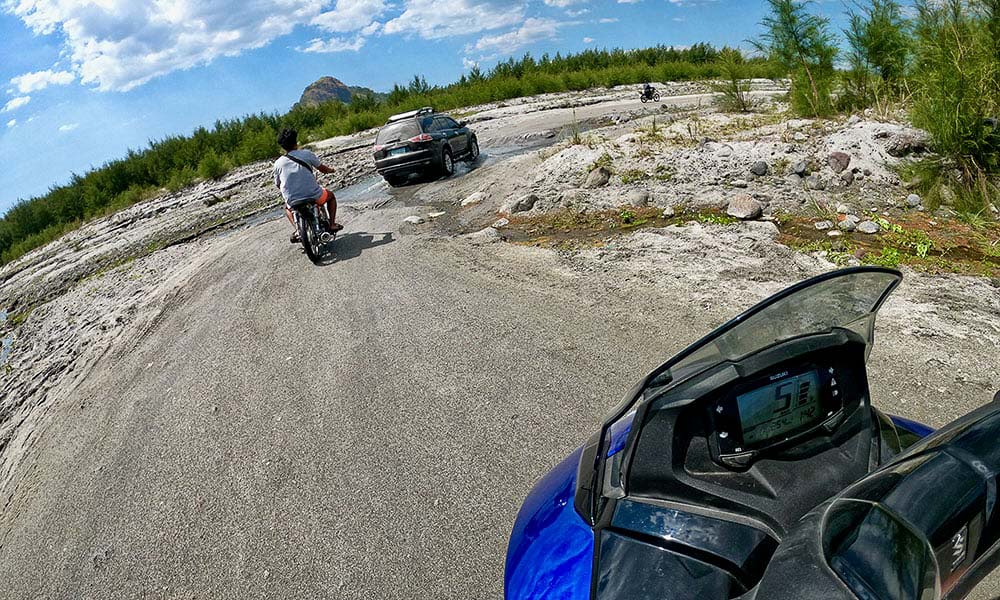
When we got to the water crossings, a bunch of SUVs up ahead were useful in showing me the best line to take. I wasn’t sure if the mud was soft enough to get us stuck, so I gunned it every time we crossed just to be sure. This time of the year, the water level is low enough to be passable for most vehicles.
During the rainy season, I wouldn’t advise it unless you were on a proper off-road vehicle. For some of the sketchier sectors, I had Max dismount and walk across just to be on the safe side. His mother would kill me if something were to happen to him!
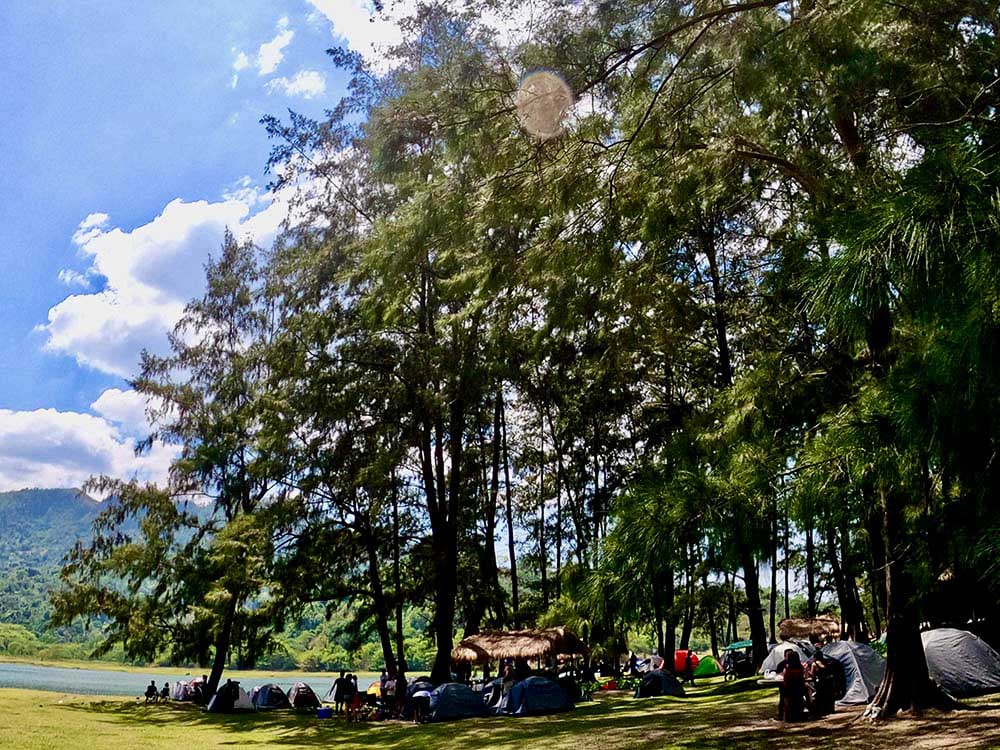
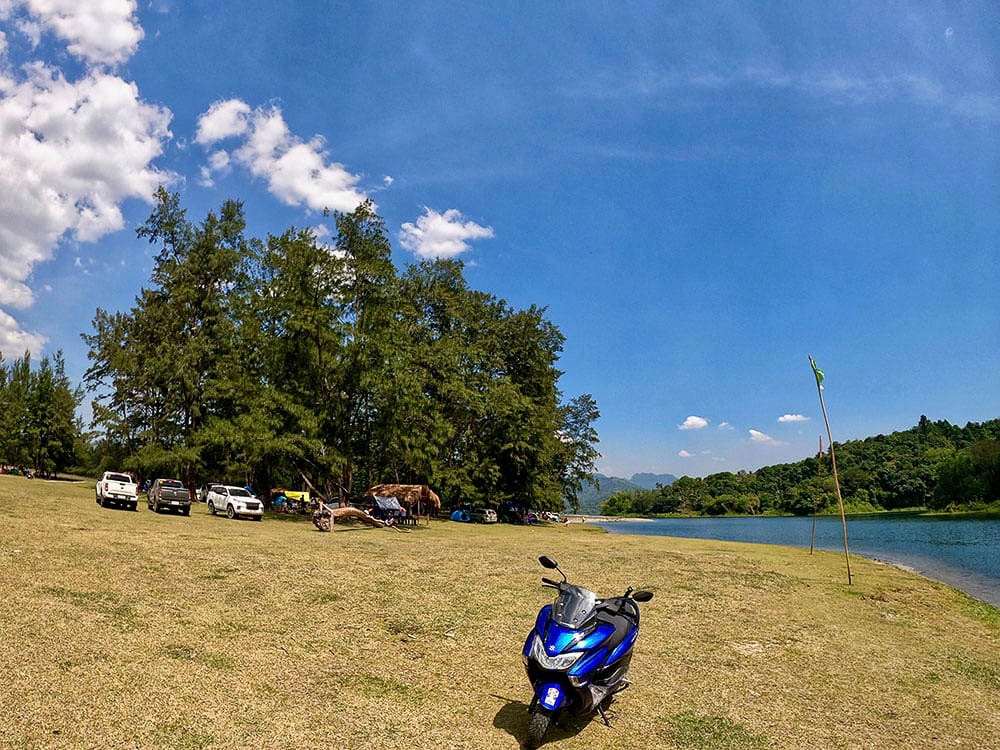
Eventually, we made it to the lake and got to appreciate the fresh breeze and scenery. The campsite gets quite busy during weekends, so there were quite a handful of pickup trucks, SUVs, and one hardy Mirage when we arrived. By my estimate, there were about a hundred people there relaxing, cooking lunch, drinking beer, and just having good fun for relatively cheap.
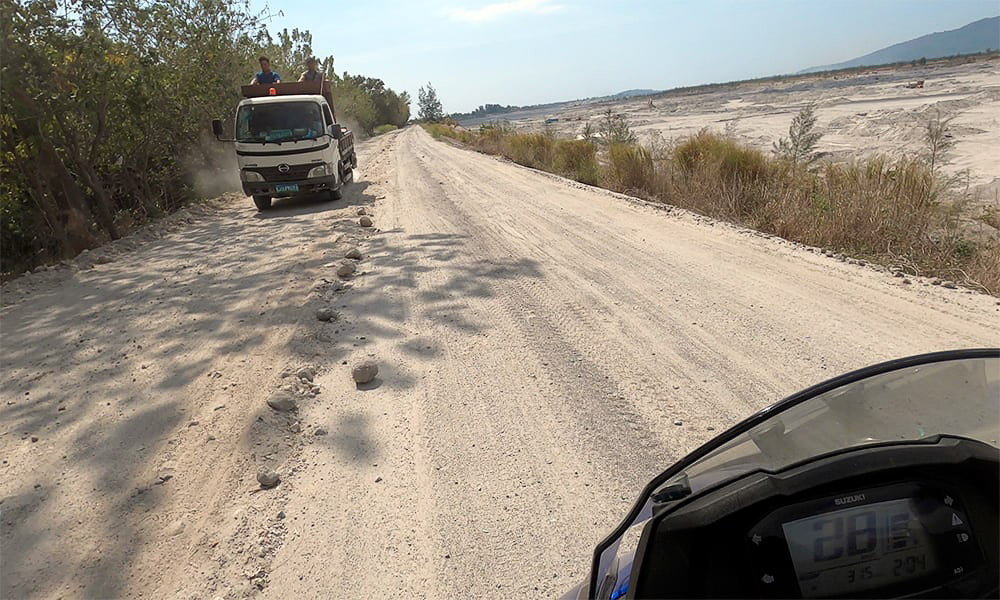
Since we’d only planned for a quick visit, we just had some dirty ice cream and some drinks, then took off again after about an hour. By the time we got back on the lahar, I was really enjoying the challenge of gliding the Burgman through all the bumps and ruts along the route.
Even though Suzuki has a more off-road-oriented scoot in the Skydrive Crossover, the Burgman acquitted itself very well as long as I kept in mind the limits of its traction.
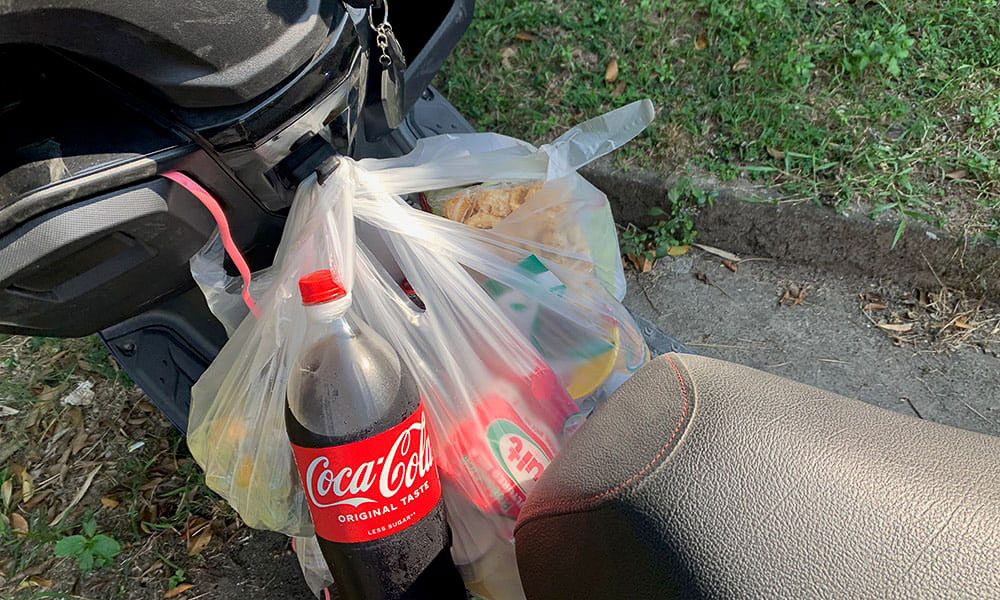
When we got back on the highway, I was thankful it had one of the most comfortable saddles in its class for both the driver and the passenger. Heck, we even did a quick stop at the grocery for some supplies, and, as usual, I forgot we didn’t have a car with a trunk for all our groceries. Score another one for the bike’s flat floor and bag hook.
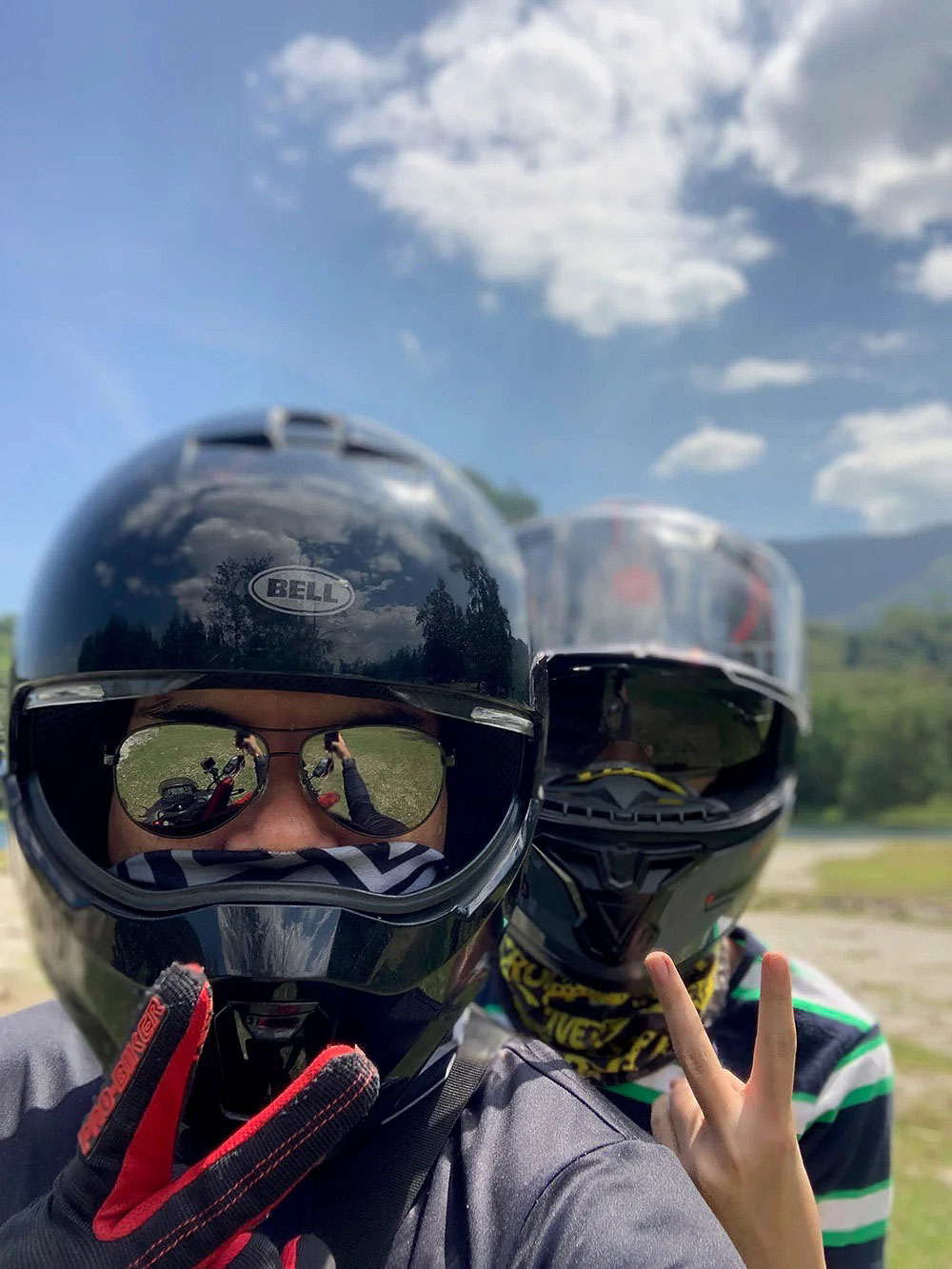
While Suzuki primarily markets the Burgman Street as an urban scooter, it’s good to know it can also handle a bit of the rough stuff as long as you know what you’re doing.
The only preparation it needed was to put sealant in the tires and pump them up to 30psi. Of course, now that we’re home again, I’m already thinking of where next to have a little adventure with the Burg.

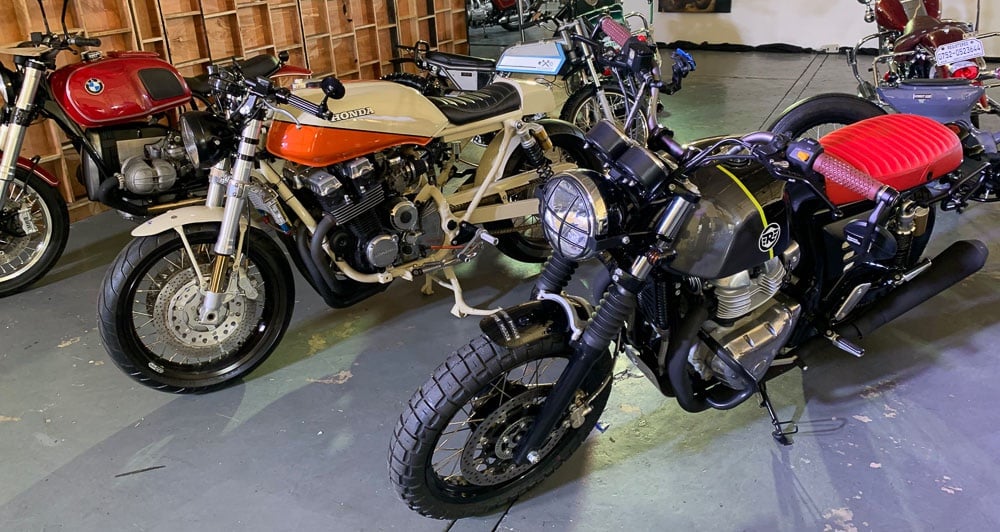

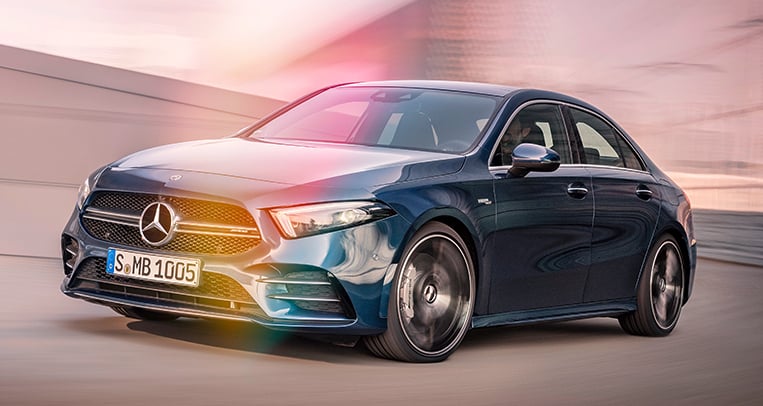

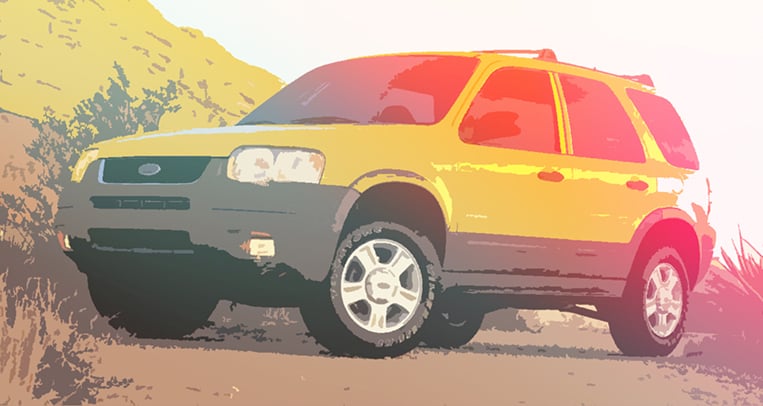

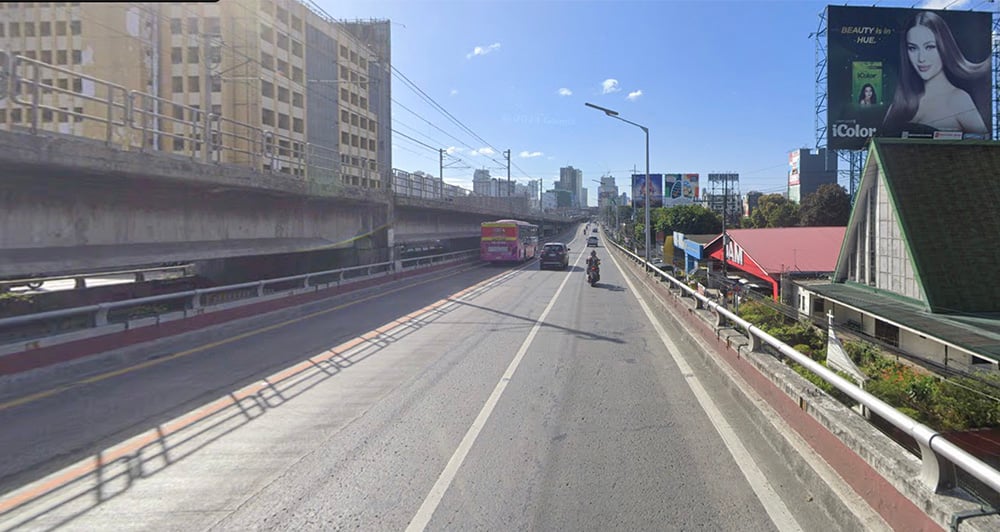
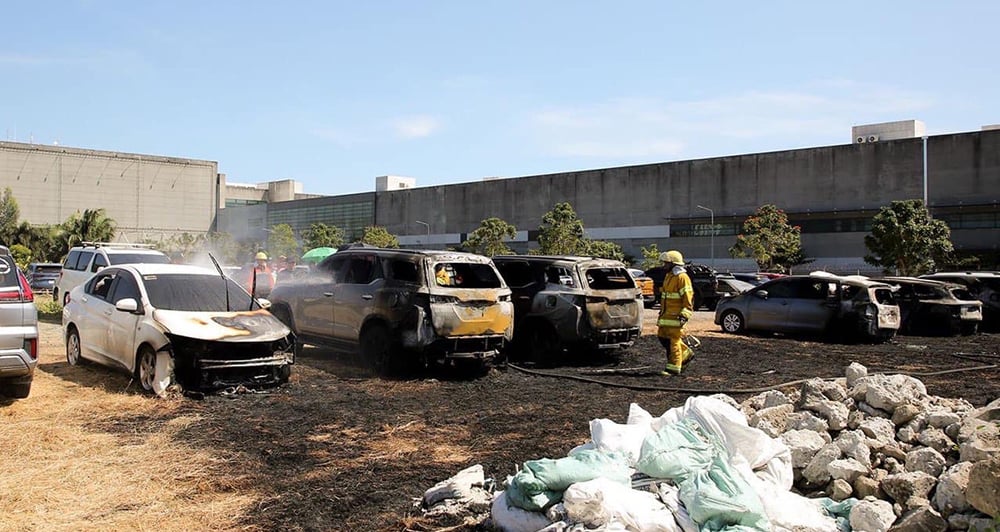
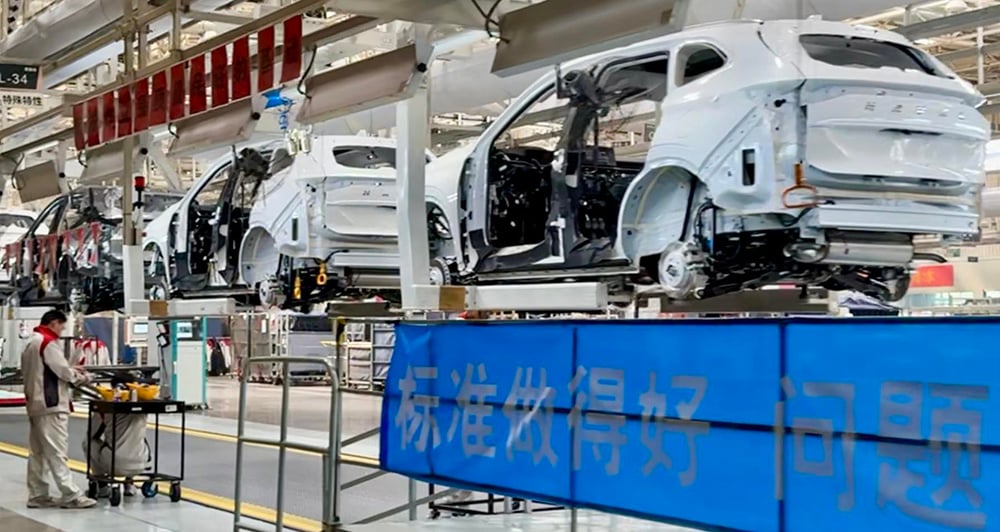
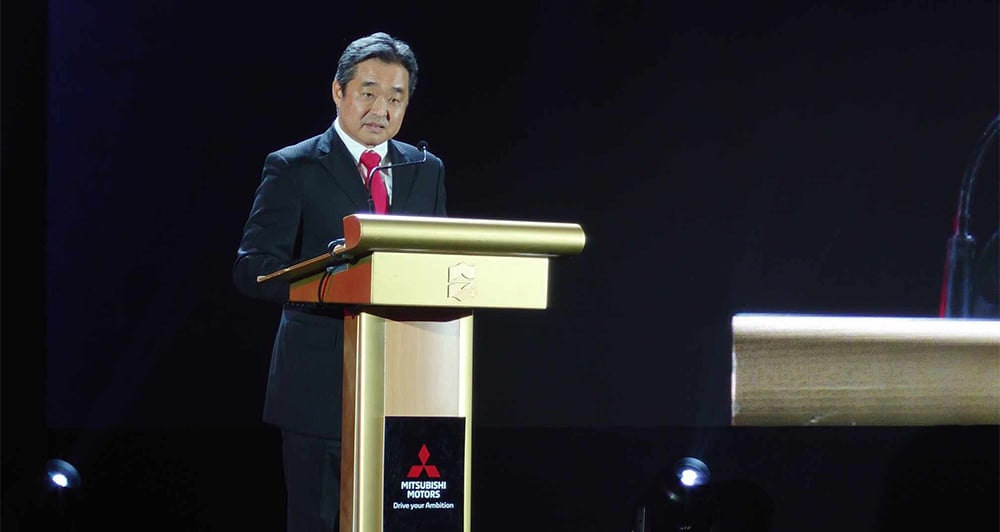
Comments